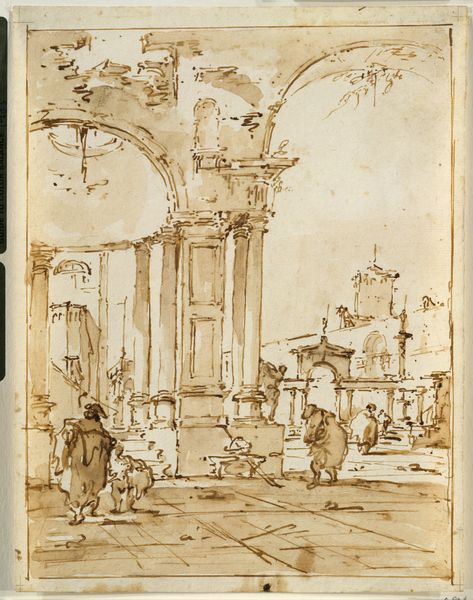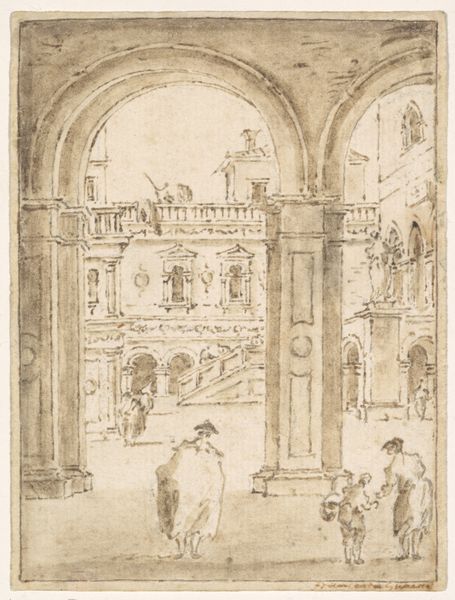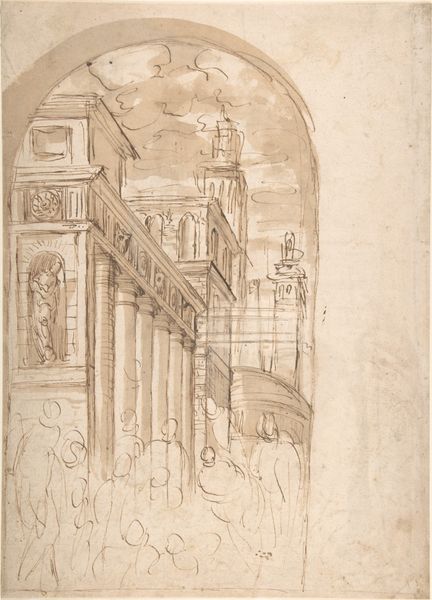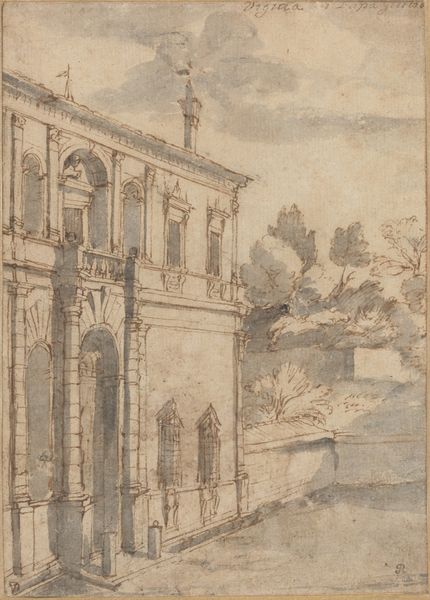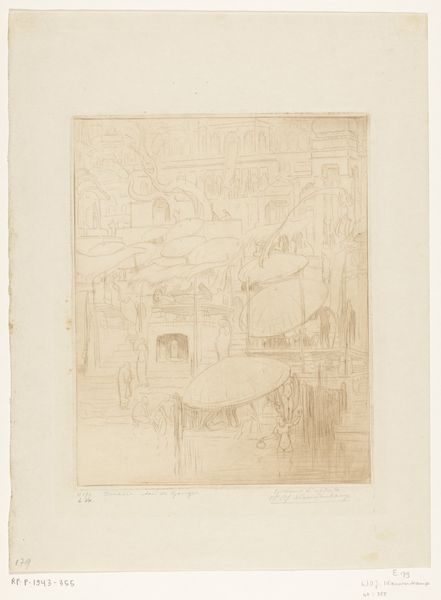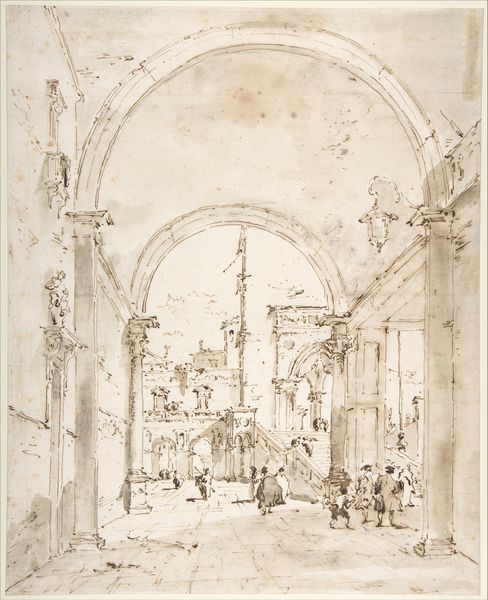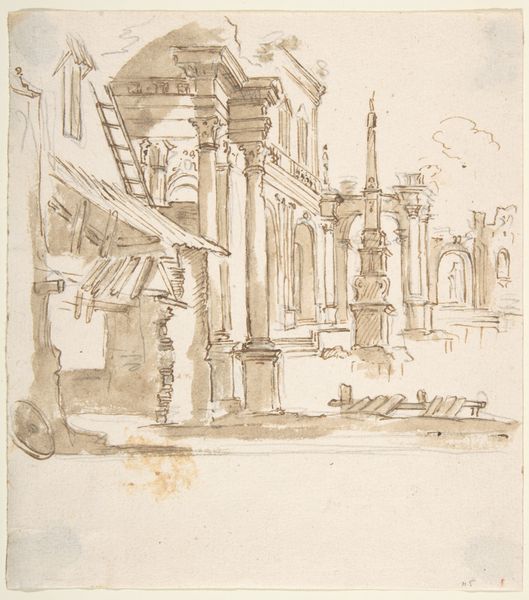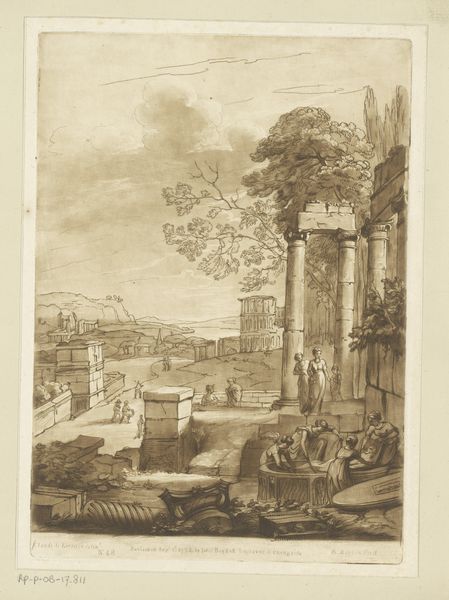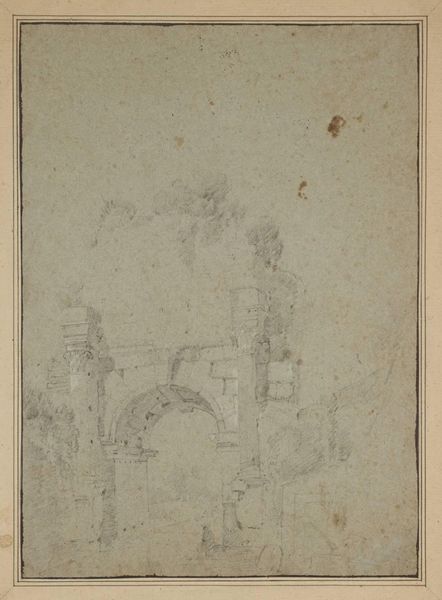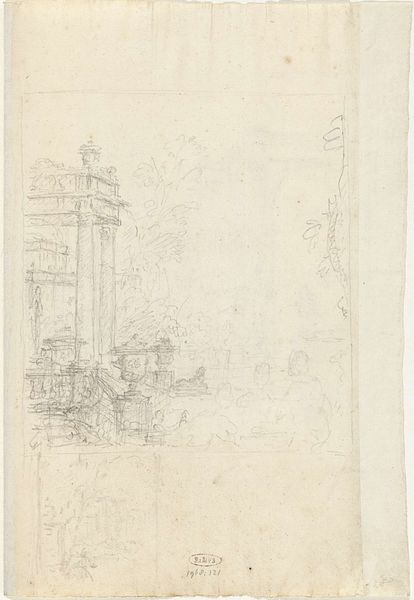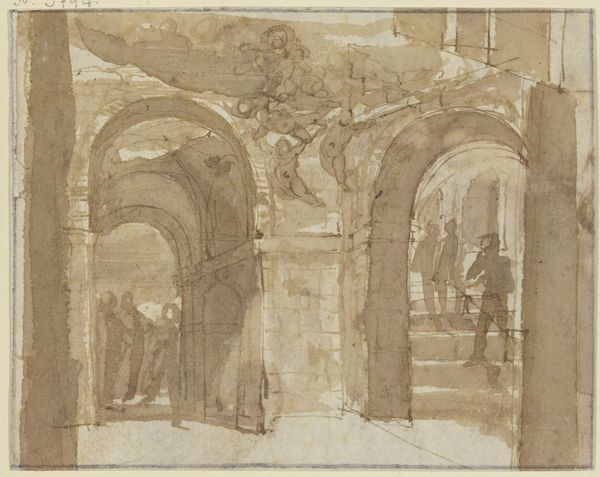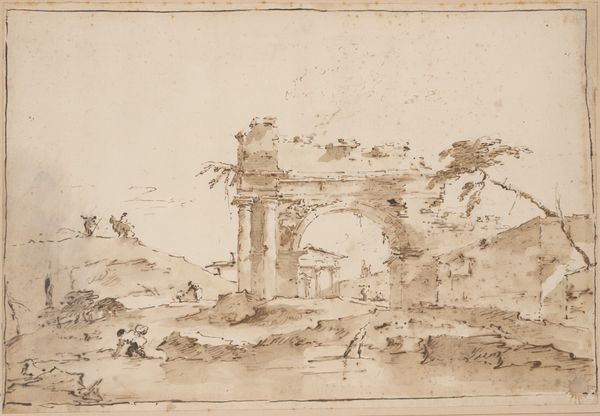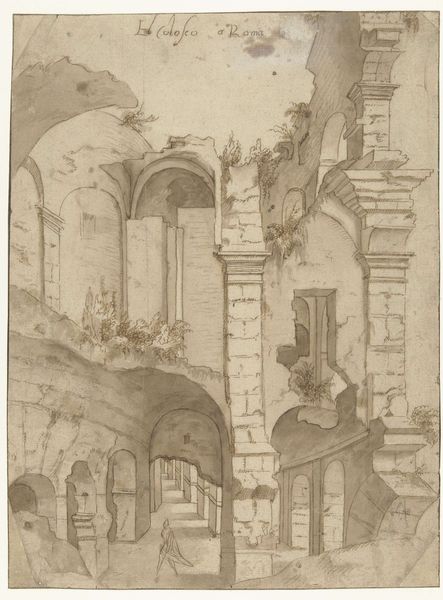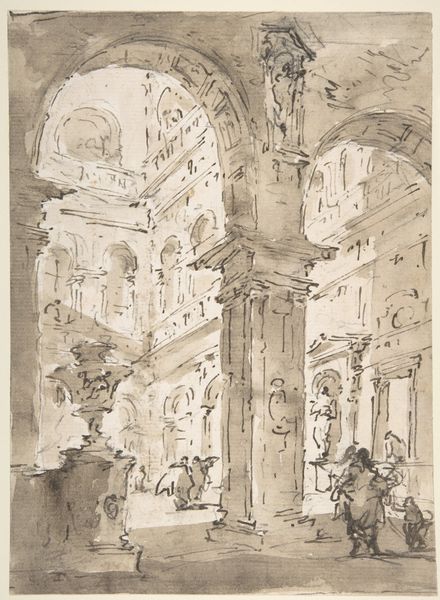
Copyright: Public Domain
Editor: We're looking at Francesco Guardi's "Capriccio mit römischen Ruinen," an ink drawing from around 1780-1790, currently housed in the Städel Museum. The scene feels almost dreamlike, rendered with such delicate lines. How do you interpret this work? Curator: Observe how Guardi employs line and wash to define form. Note the repeated motif of the arch, each slightly varied, creating a sense of spatial recession. It’s less about precise representation and more about the interplay of light and shadow, wouldn't you agree? How do the tonal variations shape your experience of the ruined landscape? Editor: Yes, the arches certainly pull my eye back into the scene. The contrast between the dark washes and the delicate linework is really striking. It almost feels incomplete, which contributes to that dreamy atmosphere. Curator: Precisely. That apparent incompleteness is a key structural element. The unfinished quality encourages the viewer to engage actively, to fill in the gaps. Do you think this contributes to a feeling of transience or perhaps decay? Editor: I hadn’t considered that! Now that you mention it, I see both. The delicate lines and unfinished areas evoke something fleeting, while the ruins clearly suggest decay and the passage of time. Curator: See how Guardi’s careful consideration of form and line facilitates these sensations. Through a structured, but open, composition, Guardi has provided visual interest while maintaining narrative openness. Editor: I'll definitely look at other works with these formal elements in mind. Curator: Indeed, considering visual structures offers invaluable interpretive paths!
Comments
No comments
Be the first to comment and join the conversation on the ultimate creative platform.
